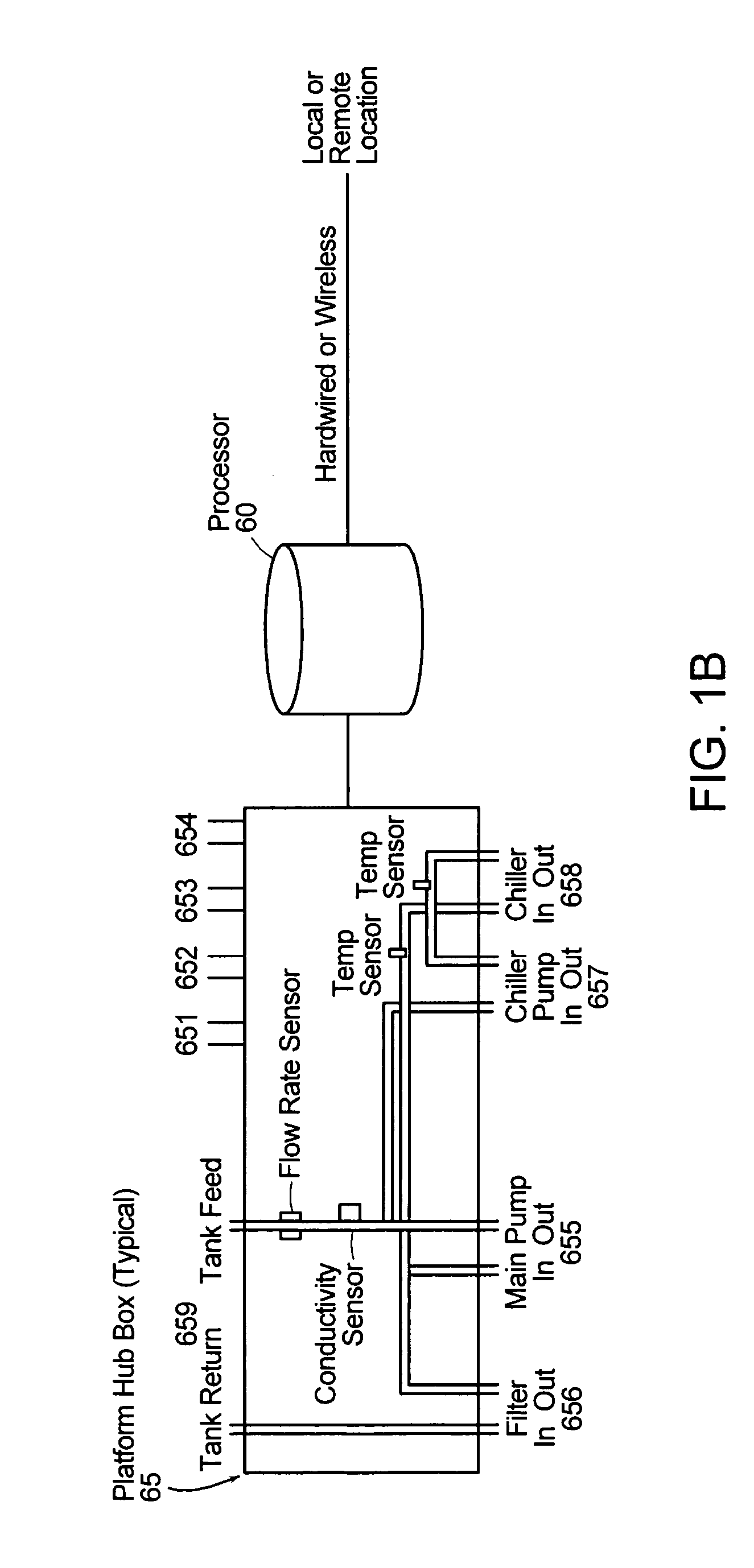System and method for monitoring and controlling an aquatic environment
a technology of aquatic environment and system, applied in the direction of separation processes, instruments, nuclear elements, etc., can solve the problems of affecting the overall aquatic ecosystem, the inability to use real-time monitoring and dynamic control the inability to monitor and control the system analysis of intermediate control devices, so as to achieve efficient and cost-effective aquatic environment, energy-saving environment, and efficient adjustment
- Summary
- Abstract
- Description
- Claims
- Application Information
AI Technical Summary
Benefits of technology
Problems solved by technology
Method used
Image
Examples
example 1
Monitoring the Chiller
[0042]In one example, sensors on the chiller and the chiller motor enable the system to monitor the performance of the chiller. Here the sensors can monitor parameters of the chiller, such as, the chiller operating temperature, the temperature of the chiller coil, the current used by the chiller, the vibration of the chiller, and the flow rate of water coming out of the chiller pump. If the system, using the sensor fusion technology, detects a failure or an impending failure based on a comparison of the recorded parameter with the reference and / or threshold parameter, the system can send an alert and take measures to minimize the aqua system temperature changes. Such measures may include regulating the lights to reduce the addition of heat while waiting for repair or maintenance. The monitoring scheme described above, although specifically described in relation to a chiller, is not limited to the chiller. A person of ordinary skill in the art will recognize tha...
example 2
A Cost Effective Method of Using Temperature Sensors, Instead of Flow Rate Sensors, to Assess the Circulation in an Aquatic Environment
[0045]In this example, as illustrated in FIG. 2, a semi-industrial size aquarium 10 has a sophisticated aquarium control system. The control system uses a variety of sensors and actuators connected to a centralized or computer control system such as processor 60 to regulate the aquatic environment (heat, cooling, lighting, etc.) in a way that seeks to maximize ecosystem stability. A primary failure mode of the ecosystem is loss of water circulation through a chiller resulting in a rise in the temperature of the aquarium. The loss can be catastrophic, as in a pump motor failure, or can be gradual as in the slow clogging on an inline filter. In either case, when the lack of circulation reaches a critical state, it can be detected through a rise in the aquarium water temperature. Here, the control system may use a flow rate sensor 413 to detect both red...
embodiment
Platform Embodiment
[0048]FIG. 4 illustrates an aqua system 10 with the invention in the platform embodiment. In this example, the invention is packaged with the necessary plumbing or machinery in the platform setting. This embodiment is similar to the other embodiments with the control system, except, to accommodate the versatility of the system, a platform hub box 65 is connected to the processor 60. The platform hub box 65 may be a box with built-in sensor modules (with integrated sensors) or receptacles 651 for the sensors that could be part of an aquatic environment 10. The platform hub box 65 may also include the active components, such as the sensors, valves, control devices, and the core plumbing or machinery required to maintain an aquatic environment. In another embodiment, specific control devices such as the pumps, filters and the aquatic system enclosure can be coupled to the platform hub box. In this embodiment, the user may connect the aquarium plumbing or machinery to...
PUM
| Property | Measurement | Unit |
|---|---|---|
| threshold parameter | aaaaa | aaaaa |
| size | aaaaa | aaaaa |
| temperature | aaaaa | aaaaa |
Abstract
Description
Claims
Application Information
 Login to View More
Login to View More - R&D
- Intellectual Property
- Life Sciences
- Materials
- Tech Scout
- Unparalleled Data Quality
- Higher Quality Content
- 60% Fewer Hallucinations
Browse by: Latest US Patents, China's latest patents, Technical Efficacy Thesaurus, Application Domain, Technology Topic, Popular Technical Reports.
© 2025 PatSnap. All rights reserved.Legal|Privacy policy|Modern Slavery Act Transparency Statement|Sitemap|About US| Contact US: help@patsnap.com



